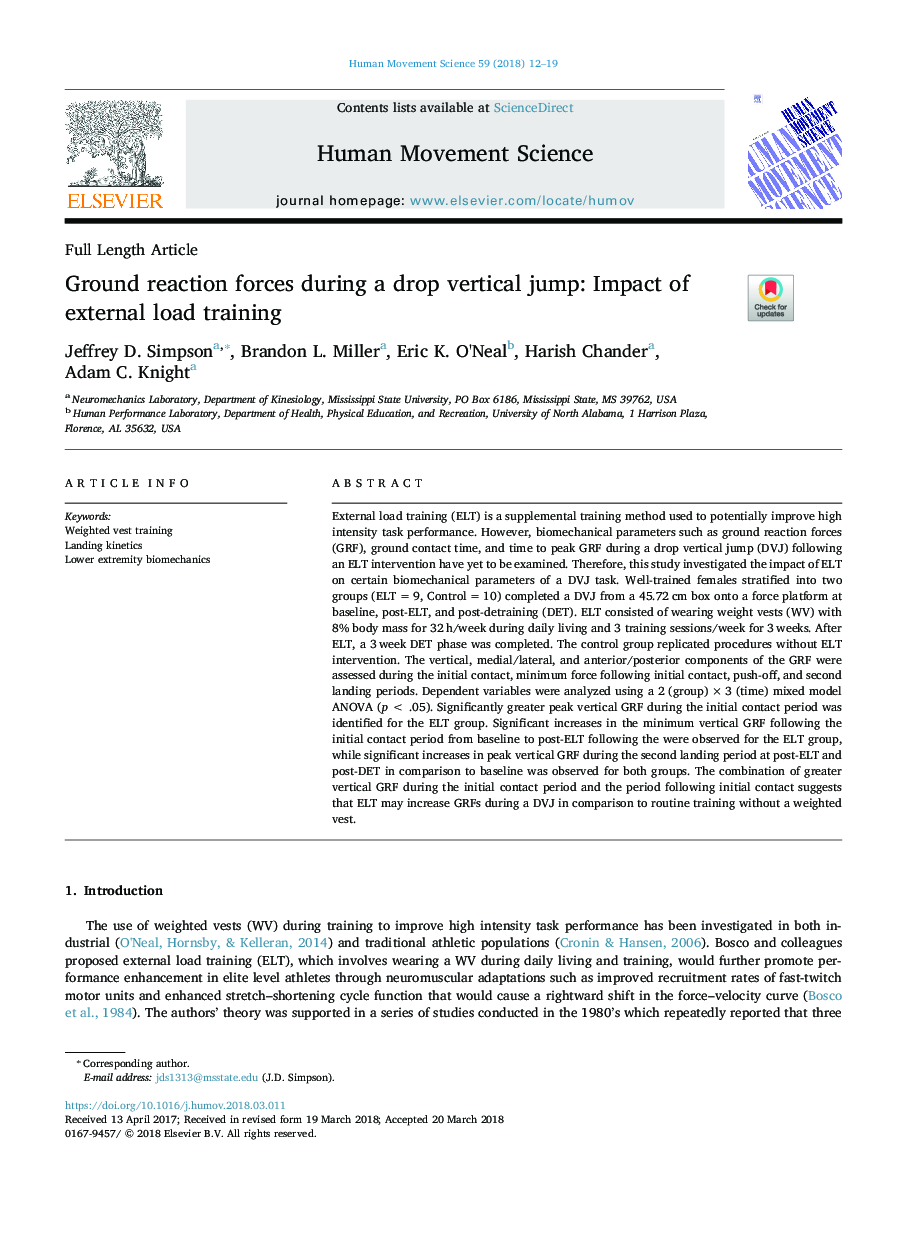| Article ID | Journal | Published Year | Pages | File Type |
|---|---|---|---|---|
| 7290870 | Human Movement Science | 2018 | 8 Pages |
Abstract
External load training (ELT) is a supplemental training method used to potentially improve high intensity task performance. However, biomechanical parameters such as ground reaction forces (GRF), ground contact time, and time to peak GRF during a drop vertical jump (DVJ) following an ELT intervention have yet to be examined. Therefore, this study investigated the impact of ELT on certain biomechanical parameters of a DVJ task. Well-trained females stratified into two groups (ELTâ¯=â¯9, Controlâ¯=â¯10) completed a DVJ from a 45.72â¯cm box onto a force platform at baseline, post-ELT, and post-detraining (DET). ELT consisted of wearing weight vests (WV) with 8% body mass for 32â¯h/week during daily living and 3 training sessions/week for 3â¯weeks. After ELT, a 3â¯week DET phase was completed. The control group replicated procedures without ELT intervention. The vertical, medial/lateral, and anterior/posterior components of the GRF were assessed during the initial contact, minimum force following initial contact, push-off, and second landing periods. Dependent variables were analyzed using a 2 (group)â¯Ãâ¯3 (time) mixed model ANOVA (pâ¯<â¯.05). Significantly greater peak vertical GRF during the initial contact period was identified for the ELT group. Significant increases in the minimum vertical GRF following the initial contact period from baseline to post-ELT following the were observed for the ELT group, while significant increases in peak vertical GRF during the second landing period at post-ELT and post-DET in comparison to baseline was observed for both groups. The combination of greater vertical GRF during the initial contact period and the period following initial contact suggests that ELT may increase GRFs during a DVJ in comparison to routine training without a weighted vest.
Related Topics
Life Sciences
Neuroscience
Cognitive Neuroscience
Authors
Jeffrey D. Simpson, Brandon L. Miller, Eric K. O'Neal, Harish Chander, Adam C. Knight,
